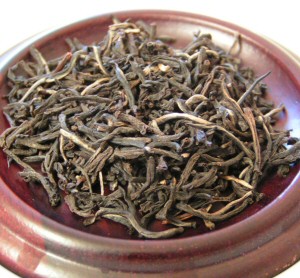Message
Types of Tea
Tea from Ceylon and Keniya
In one of the previous articles I said that there is a very simple way to state the value of pure black tea — the colder the climate where it grows is, the higher the quality of the tea is. According to this rule, ’southern’ Ceylon and Kenyan teas do not have any chance comparable to ‘northern’ Chinese and Indian teas. However, as you probably understand, simple rules and simple principles work only with simple things — but tea is far from being a simple thing.Both in Ceylon and in Kenya there are huge tea regions where they grow tea of various property and character. Take Ceylon for example, there are tea gardens in the plains, where climate is hot and damp, which results in plain and even rough tea; and there are tea gardens in the mountains (sometimes very high in the mountains), where tea is very light in taste and fine in flavor, comparable to Indian Darjeeling tea. Everything is great; a true judge of tea can be on the loose. But there is one problem.
 |
||
| Grey's Teas Ceylon Vikara Silver Tips Tea. | ||
Both producers (in Sri-Lanka), and sellers (all over the world) prefer to treat Ceylon tea according to the aforementioned simple principles — and high-quality Ceylon estate teas very seldom reach the customer. The attempts to offer consumers different Ceylon tea under one trade mark seldom go beyond only different names on the labels. Thus, however sad it might be, mostly we deal with averaged Ceylon tea, and I shall say several averaged words about it.
Averaged Ceylon tea, comparable with Indian or Chinese tea, has more saturated taste, more intense (and less refined) flavor, and stronger brew. It goes perfectly with sugar, milk, and lemon. Its taste will not be suppressed with spiciest pepperoni or salami — that is why Ceylon tea is perfect for the occasions when tea accompanies rich food and is not the main course.
Having appeared in our country in early 1970s, Ceylon tea came to the liking of quiet Soviet people — right for its very qualities: rich taste, brisk flavor, and strong brew. A cup of Ceylon tea with two spoonfuls of sugar, a slice of lemon, and some ‘Rizhsky’ balm became one of indispensable attributes of moderately splendid life.
I mentioned ‘Rizhsky’ balm not by chance — Ceylon tea goes well with strong drinks. Those who love strong emotions may try strong tea half with vodka or rum — you’ll get ordinary grog, which warms a lot, but is not healthy. But if instead, into the pot with still dry tea-leaves, you add a tablespoonful of Armenian (none other) brandy, let it draw for ten minutes and only then add hot water, you will get an absolutely wonderful drink. It is especially good if you drink it at the fireplace in winter…
As for Ceylon teas from different tea regions of Sri-Lanka, I can say only little about them. If you meet mysterious words in the name of the tea, such as Uva, Dimbula, Matakelle, Nuwara Eliya, Kandy, Ruhunu — then you have tea from a certain tea region of the sunny island, ‘the pearl of the Indian Ocean’. Here I shall mention again that the quality of estate Ceylon teas brought to Russia is not the best and does not give the idea of features typical for this or that particular kind of Ceylon tea. I personally regret at this fact very much.
The exception is ‘Ruhunu’ tea by ‘Master Team’. When brewed, this tea showed all characteristics which I had read about. The point is that soils in the Ceylon region with a strange name Ruhunu are of very specific composition, which results in tea leaves being very dark there, almost black. After traditional tea processing these very leaves become very similar to small pieces of coal with oil-like shimmer. Despite this non-culinary looks and very dark brew, both taste and flavor of the tea are very good.
 |
||
| Tea House Kenyan Tea. | ||
The situation with Kenyan teas is of little difference from the one with Ceylon teas. In the World market Kenyan tea is mostly met in the form of СTС-tea — it makes a very strong brew, contains a lot of caffeine, and, as a result, is very invigorative. Pure СTС Kenya tea is rarely used — its taste and flavor were sacrificed in favor of the strong brew. But it is very widely used in tea blends to get a drink of decent taste with invigorative quality. To my mind, the best blend of this kind in our supermarkets is Ahmad English Breakfast Tea.
For a long time I could not find any pure non-СTС Kenyan tea of decent quality. I had luck this January (2004) in London Tea House, not far from Covent Garden. I did not drink it at once; I waited until I came home and could make it in the accustomed water and tea-things…
I do not know how it can be possible, but Kenyan tea smells of Africa. I have never been there, and do not know how to describe this smell — it is not very strong, and there is something dry and hot in it. And it is very pleasant.
I do not fancy tea with milk much — but Kenyan tea goes with milk perfectly. Maybe, it is all about this very dryness, or, maybe, something else — but this mixture is smooth, tasty, and peculiarly fragrant.
Unfortunately, pure Kenyan black teas are very uncommon in our supermarkets. As well as Nepal teas, which I like a lot (they are close to Darjeeling, but a little rougher — in a good sense of this word), and which will not be described here not to excite you in vain. On this pessimistic note I shall finish the story of pure black teas.
Denis Shumakov